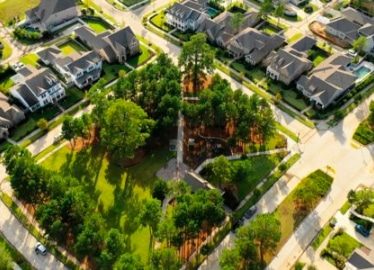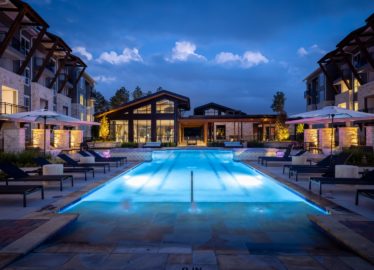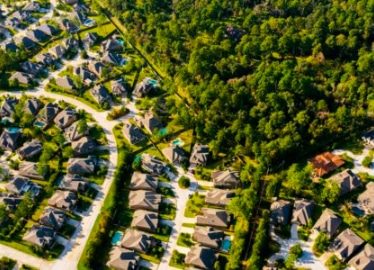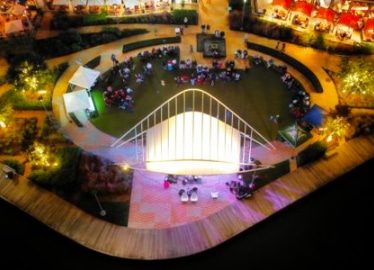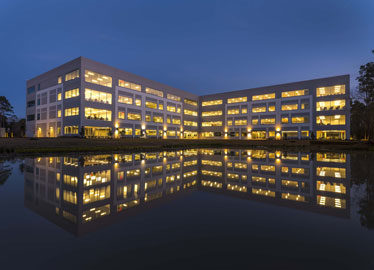Summer Landscaping — Irrigation Tips
If possible, water during pre-dawn hours but be cognizant of neighborhood water restrictions.
If it seems it was only a few short months since we were fighting frigid temperatures and icy conditions, it’s because that was only just a few short months ago. However, in typical southern Texas style, winter swiftly melted away, spring made a brief appearance and we have already hit summer-level temperatures in the 90s.
It’s at times like these where confusion reigns over how much and how often to water your lawns and plants. Science and urban legend collide as each neighbor has his or her own take on the topic. Fortunately, there is a local landscaping expert who can direct the proper flow of information to you.

Marcus Fielder is director of landscape management for The Howard Hughes Corporation. Marcus turned a college-time summer lawn service job into a blooming career in landscaping, and he has the know-how to keep your grass greener on your side of the fence.
“As we hit the higher temperatures and the sun blazes down on us during longer days, our concerns grow about how to properly water our lawns,” he says. “Adding to the heat and the lack of rain are the different water restrictions imposed by the different Municipal Utility Districts in The Woodlands.”
Additionally, what may qualify as good lawn maintenance for one village may not be as effective in another, as many factors can influence conditions, including soil type, turf type and shade. Marcus points out that the trend to water briefly each day is not necessarily the best for your landscape. “Light, frequent watering saturates only the top couple of inches of the soil profile. This doesn’t promote deep root growth.”

Instead, he encourages infrequent, heavy watering. This type of watering promotes deeper root growth, which will aide during periods of drought and or water restrictions. “There’s no reason to water seven days a week. When water restrictions are placed into effect, residents are typically given two to three days a week as a limit. This is actually plenty of time to take care of your irrigation needs.”
As for which times of day one should turn on the sprinklers, everyone has an opinion. But Marcus has some scientific facts to back up his. “From a horticultural perspective, it’s best to water during pre-dawn hours. Of course, hours set by your neighborhood’s water restrictions take precedence, but if they allow water usage for a couple of hours before sunrise, that’s your best option.”
Residents should try to time their irrigation to complete the cycle as close to sunrise as possible. Watering at this time of day increases watering efficiency by minimizing evaporation and allowing any excess water left on the foliage to dry shortly after completion. Wet conditions throughout long periods of the night can create a breeding ground for fungus and disease.

He also suggests a “rotating cycle” when watering your lawn. “Most new irrigation systems have a ‘cycle soak’ feature that decreases the amount of runoff produced. It works by watering different zones in rotation, so that Zone A has a chance to let the water permeate the soil while Zone B is being watered and then returning to Zone A to complete the cycle.” Even without the automated cycling ability, he encourages setting up your sprinklers to mimic it. This will more than likely require multiple start times programmed on your controller.
So, which grasses are best suited for our summer heat (better known as “summer perennial grass”)? Marcus has three he recommends. “Bermuda is my favorite and by far the most drought-tolerant. After that, zoysia grass is a good alternative and has some really good shade qualities. The most popular grass utilized in our heat is St. Augustine, but keep in mind this grass has the highest watering needs.”
As for plants and flowers, he points out that there are also options for each season. “February is the best month to plant new materials, so unfortunately for this season we’re past the golden hour.” He advises against planting annuals in summer months due to water requirements and restrictions. Homeowners and business owners wishing to plant trees should wait until later fall or early winter to plant. “The more time your growables have to adapt, the better,” he says. “Your best bet is to always keep weather trends in mind; do your research to know what is best to plant, and when it is best to plant it.

